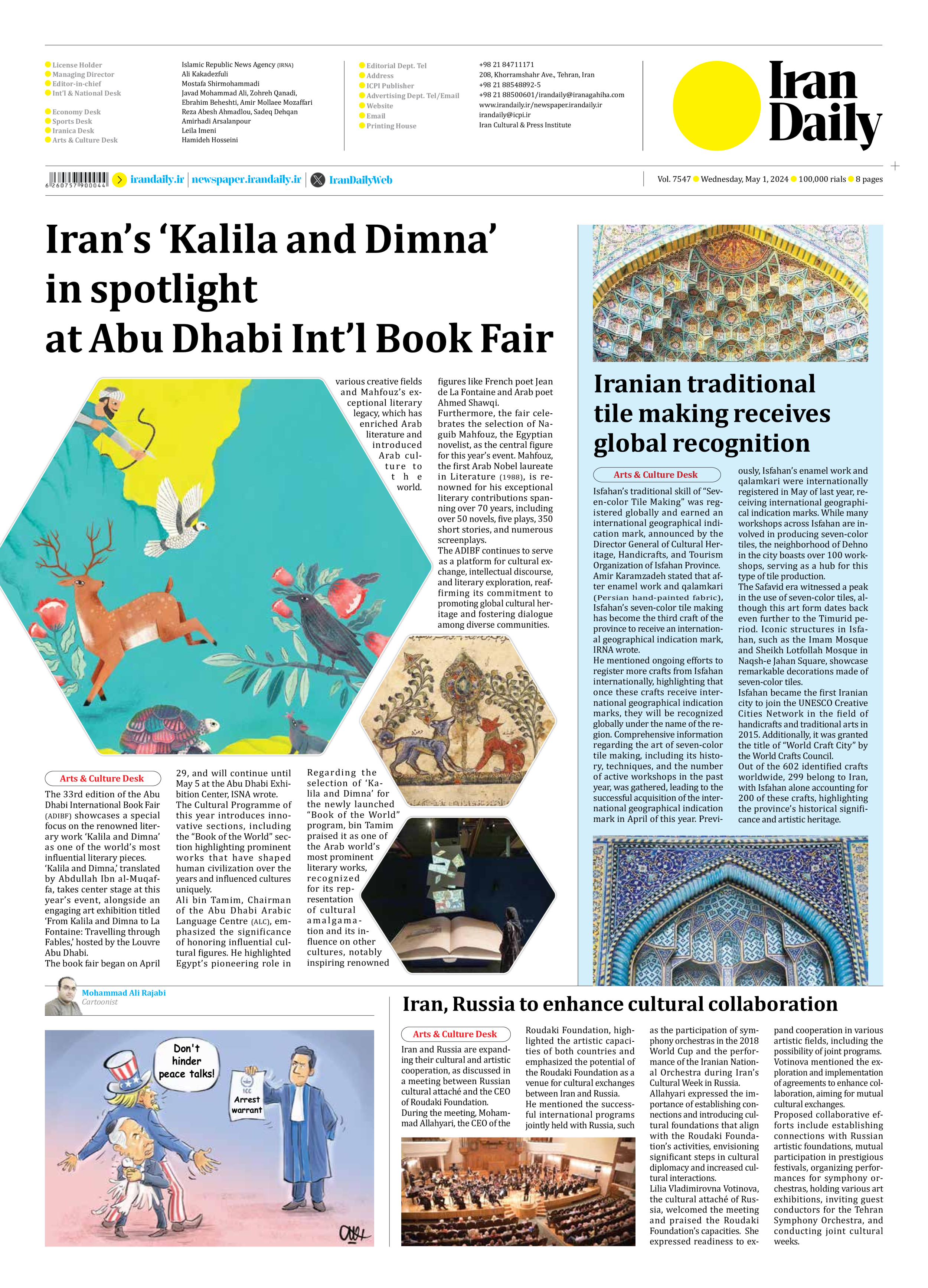
Copy in clipboard...
Iranian traditional tile making receives global recognition
Amir Karamzadeh stated that after enamel work and qalamkari (Persian hand-painted fabric), Isfahan’s seven-color tile making has become the third craft of the province to receive an international geographical indication mark, IRNA wrote.
He mentioned ongoing efforts to register more crafts from Isfahan internationally, highlighting that once these crafts receive international geographical indication marks, they will be recognized globally under the name of the region. Comprehensive information regarding the art of seven-color tile making, including its history, techniques, and the number of active workshops in the past year, was gathered, leading to the successful acquisition of the international geographical indication mark in April of this year. Previously, Isfahan’s enamel work and qalamkari were internationally registered in May of last year, receiving international geographical indication marks. While many workshops across Isfahan are involved in producing seven-color tiles, the neighborhood of Dehno in the city boasts over 100 workshops, serving as a hub for this type of tile production.
The Safavid era witnessed a peak in the use of seven-color tiles, although this art form dates back even further to the Timurid period. Iconic structures in Isfahan, such as the Imam Mosque and Sheikh Lotfollah Mosque in Naqsh-e Jahan Square, showcase remarkable decorations made of seven-color tiles.
Isfahan became the first Iranian city to join the UNESCO Creative Cities Network in the field of handicrafts and traditional arts in 2015. Additionally, it was granted the title of “World Craft City” by the World Crafts Council.
Out of the 602 identified crafts worldwide, 299 belong to Iran, with Isfahan alone accounting for 200 of these crafts, highlighting the province’s historical significance and artistic heritage.







